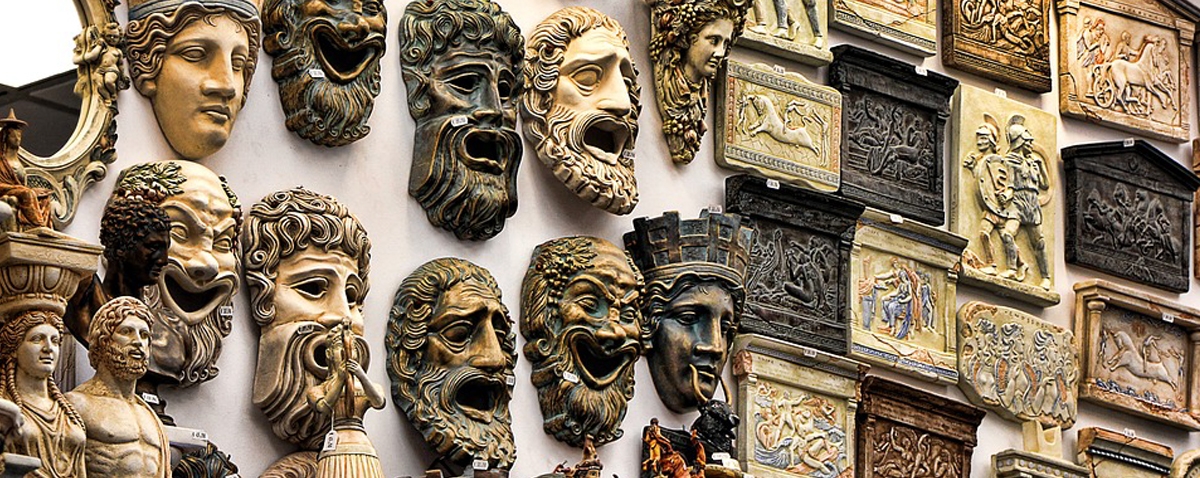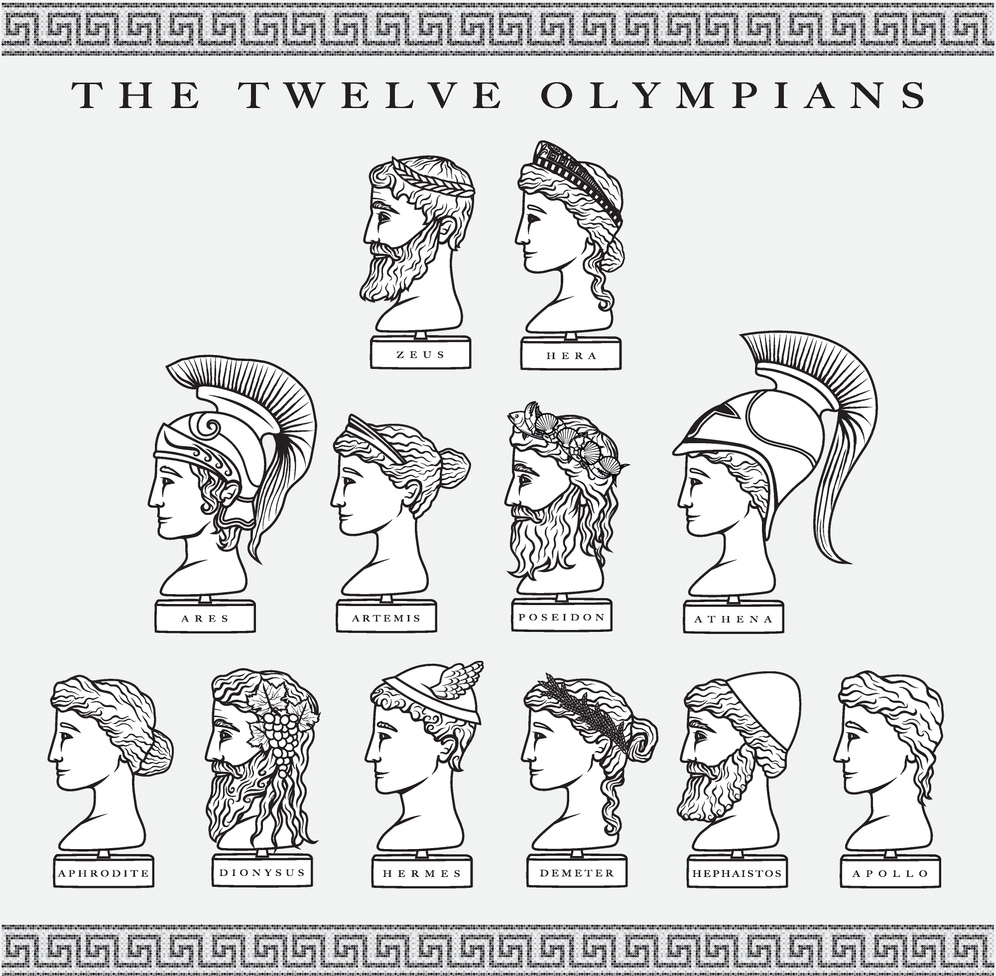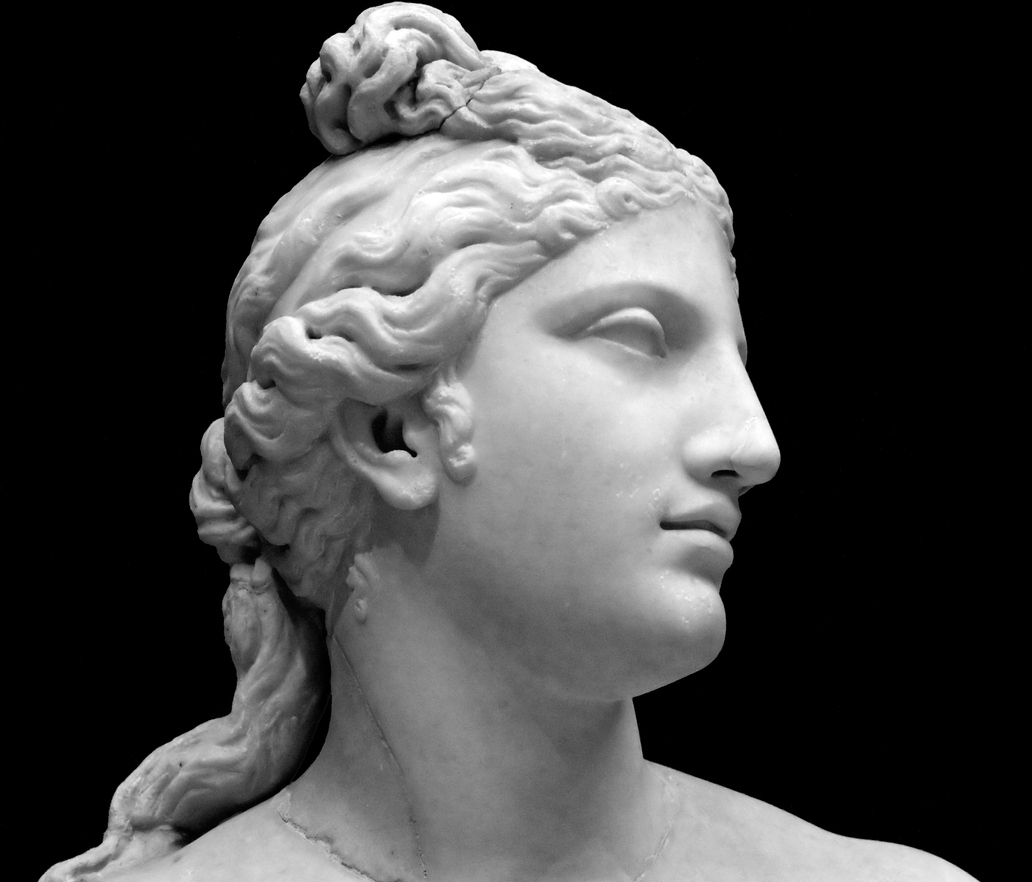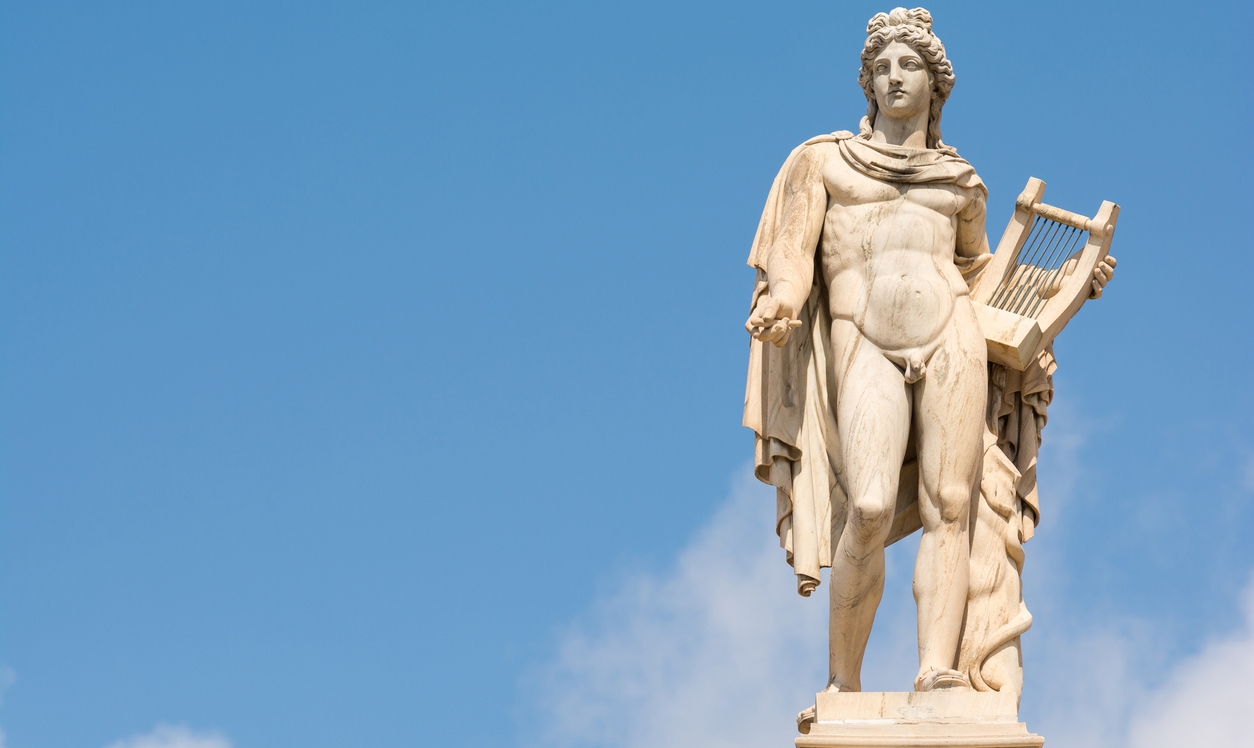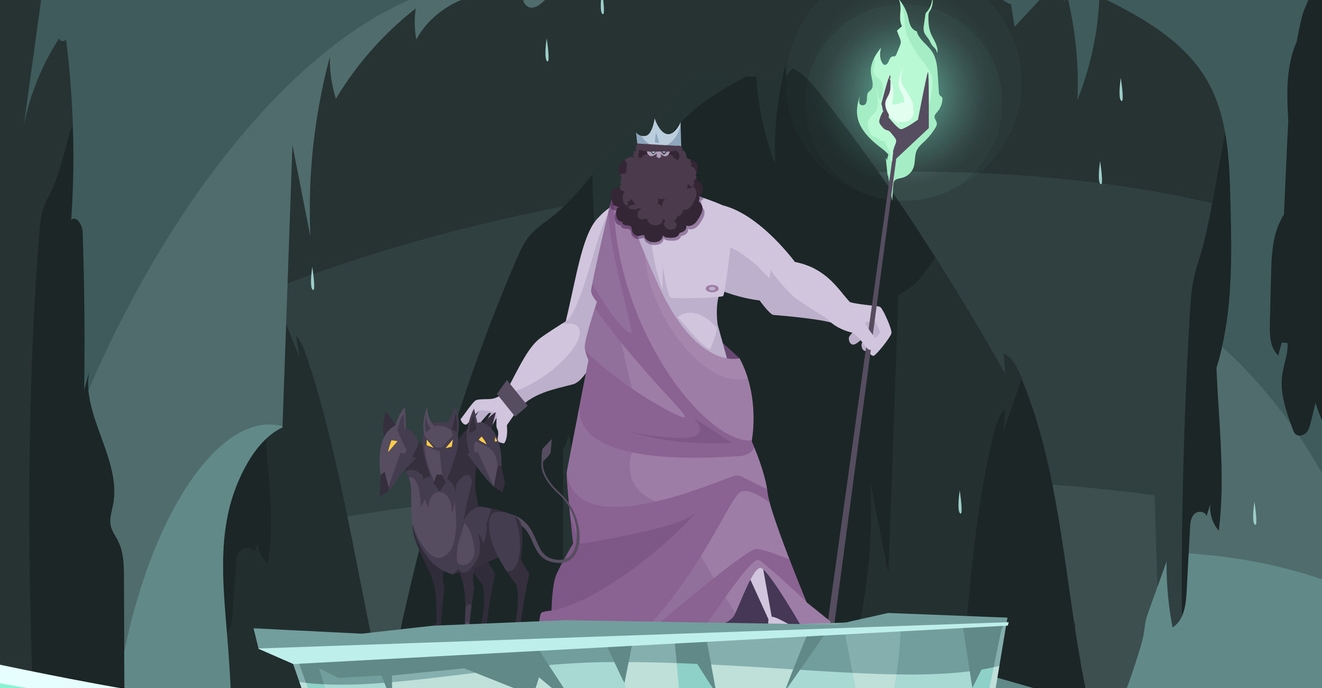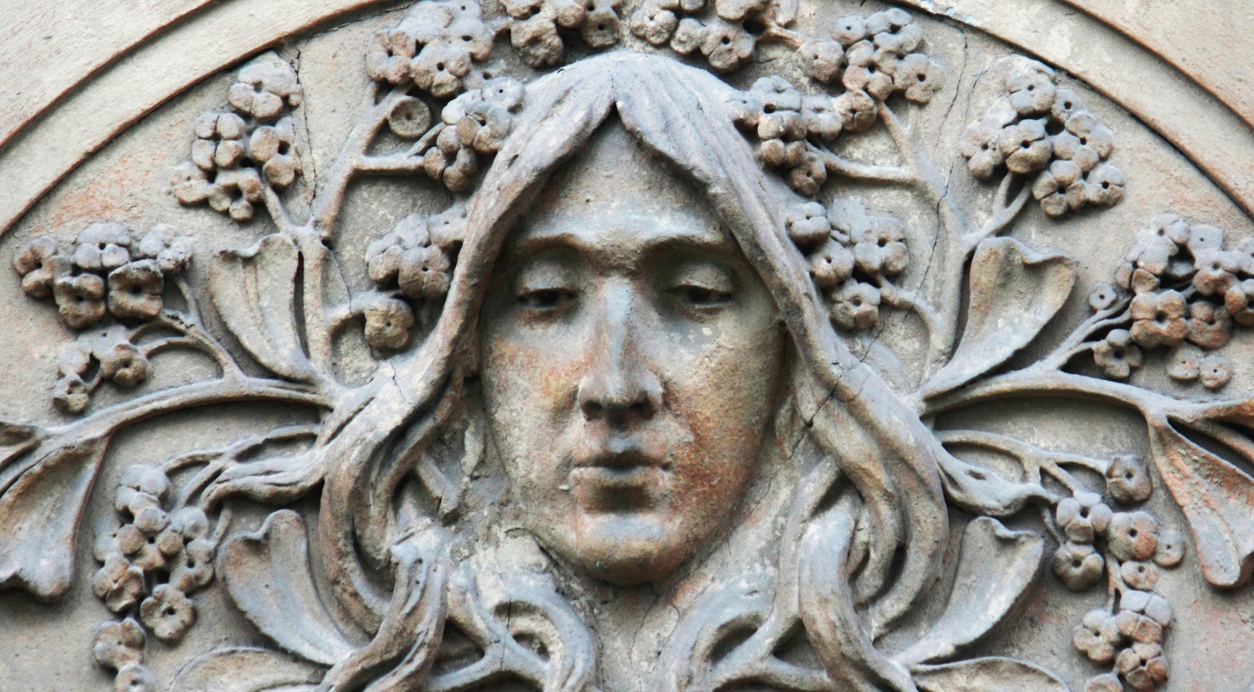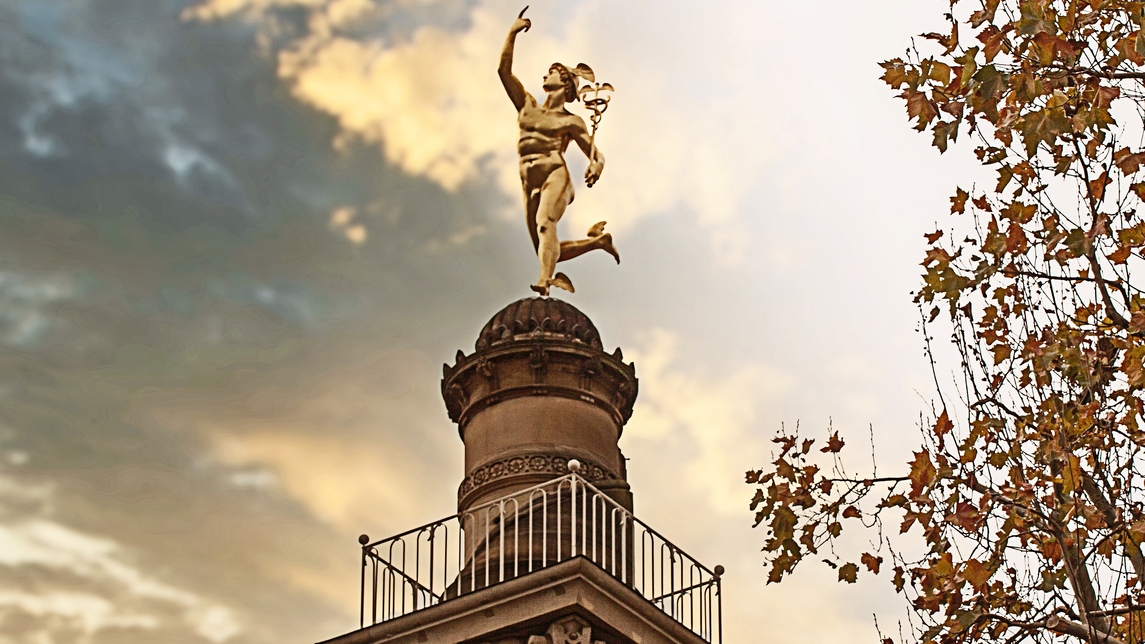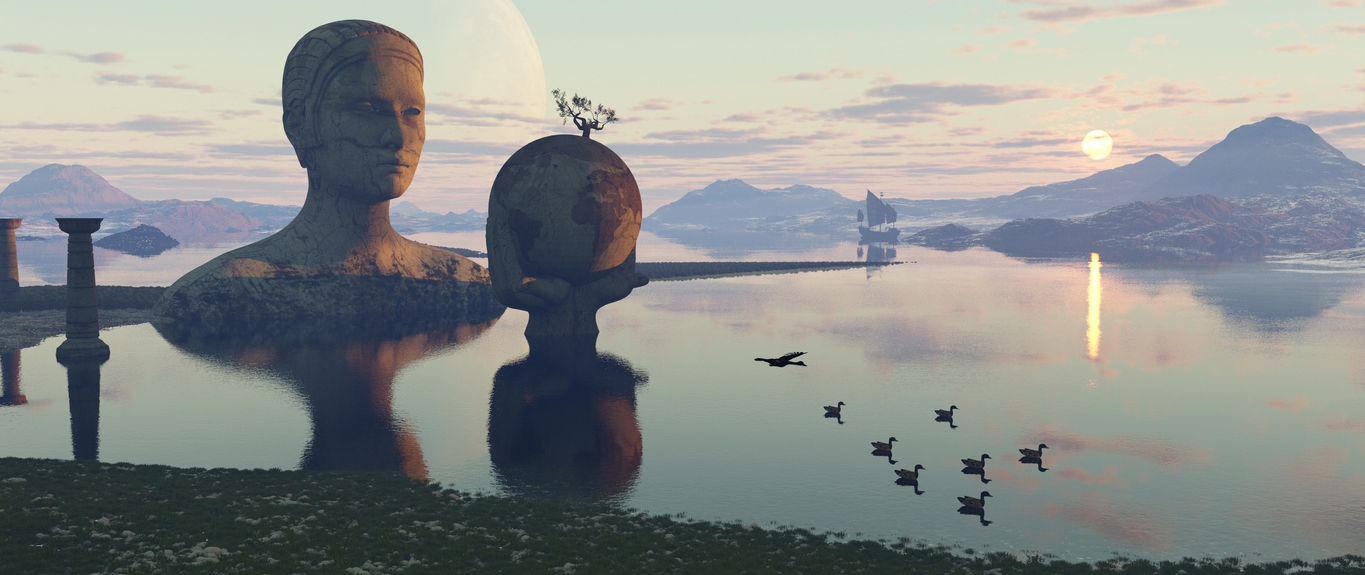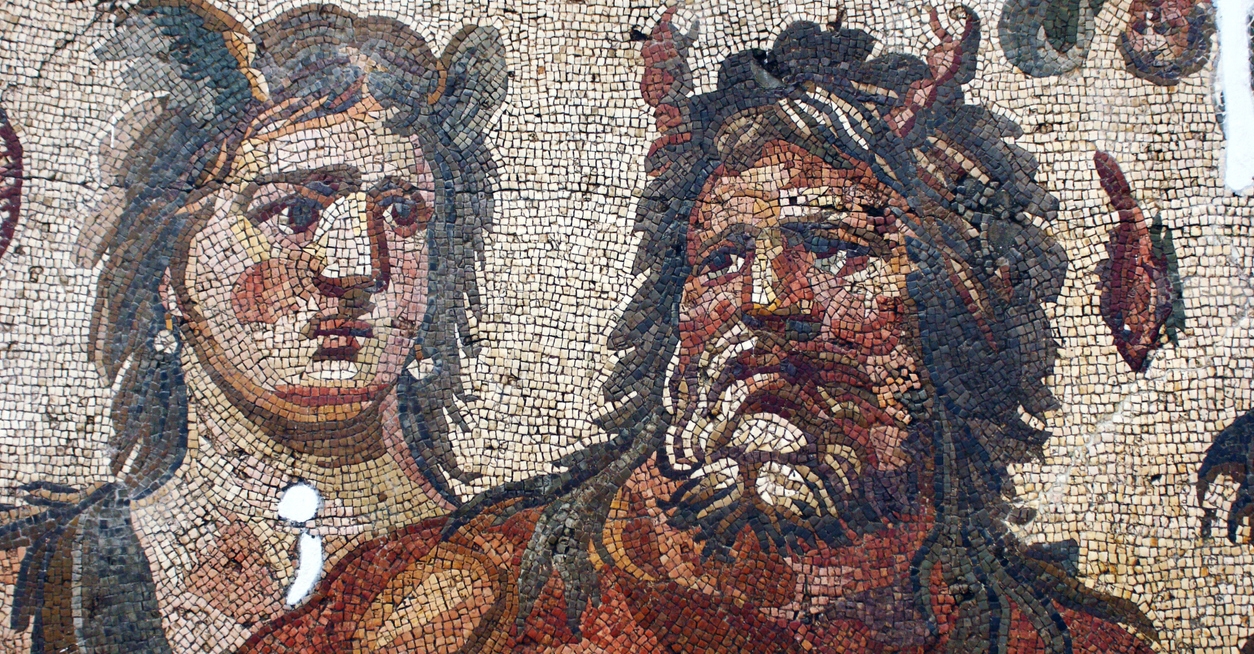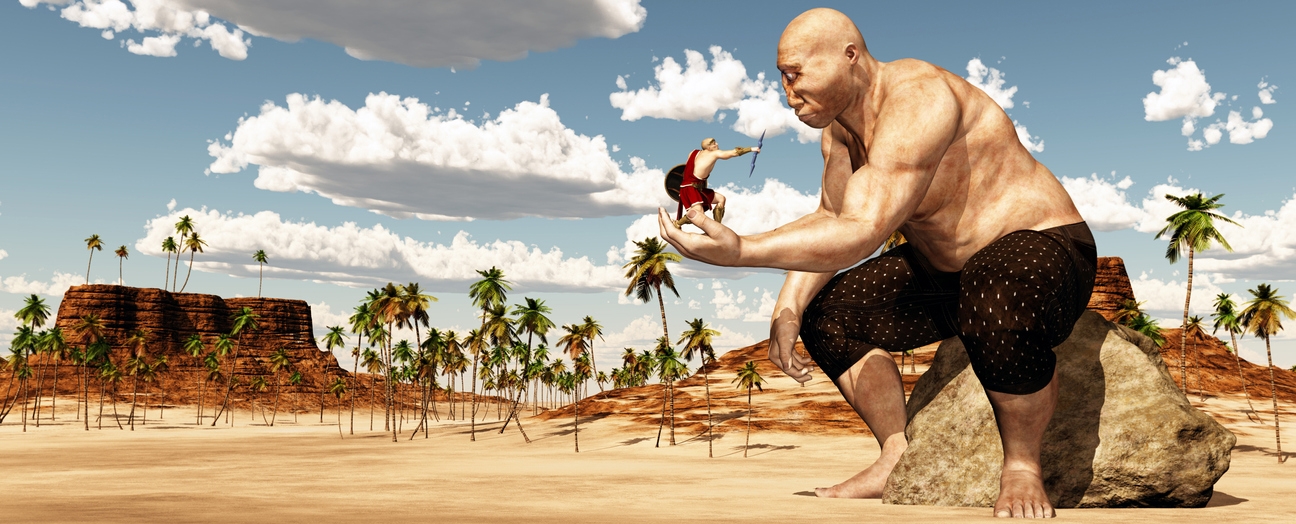Background
Ancient Greek mythology includes vast and fascinating legends about gods and goddesses, as well as heroes, monsters, warriors, and fools that were an important part of daily life in the ancient world. These myths explained everything from religious rituals to the weather and gave meaning to the world that people saw around them. However, there is no single original text that introduces all Greek myths’ characters and stories. First told orally in the Bronze Age, the oldest Greek myths gradually found their way into recorded literature during the archaic and classical eras of the ancient Mediterranean. [1]
The pantheon of gods and goddesses who were thought to reside on Mount Olympus, Greece’s tallest mountain, is at the center of Greek mythology. [1] They depict the early Greeks’ attempt to use human nature to explain the universe’s instability. Ancient Greek gods and goddesses are representations of human solipsism, just like every other deity created before or after. The histories of their conflicts, quarrels, and sexual conquests have had a profound impact on Western narrative and language. [2]
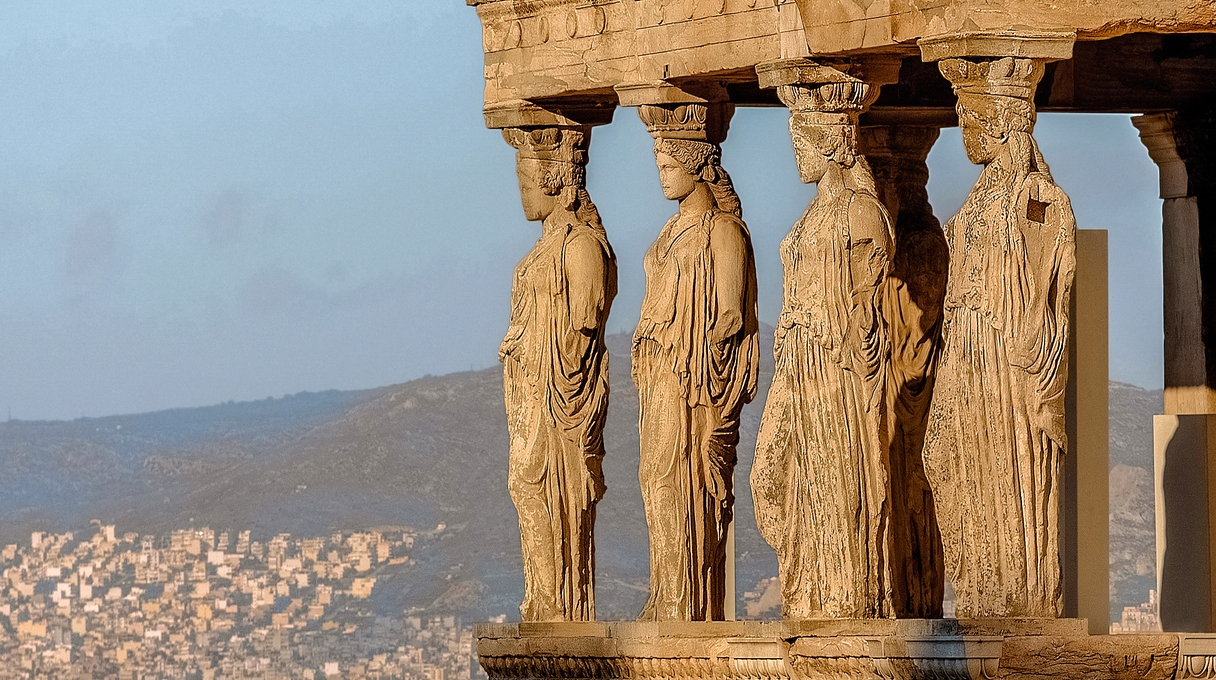
Caryatides, Acropolis of Athens, Greece
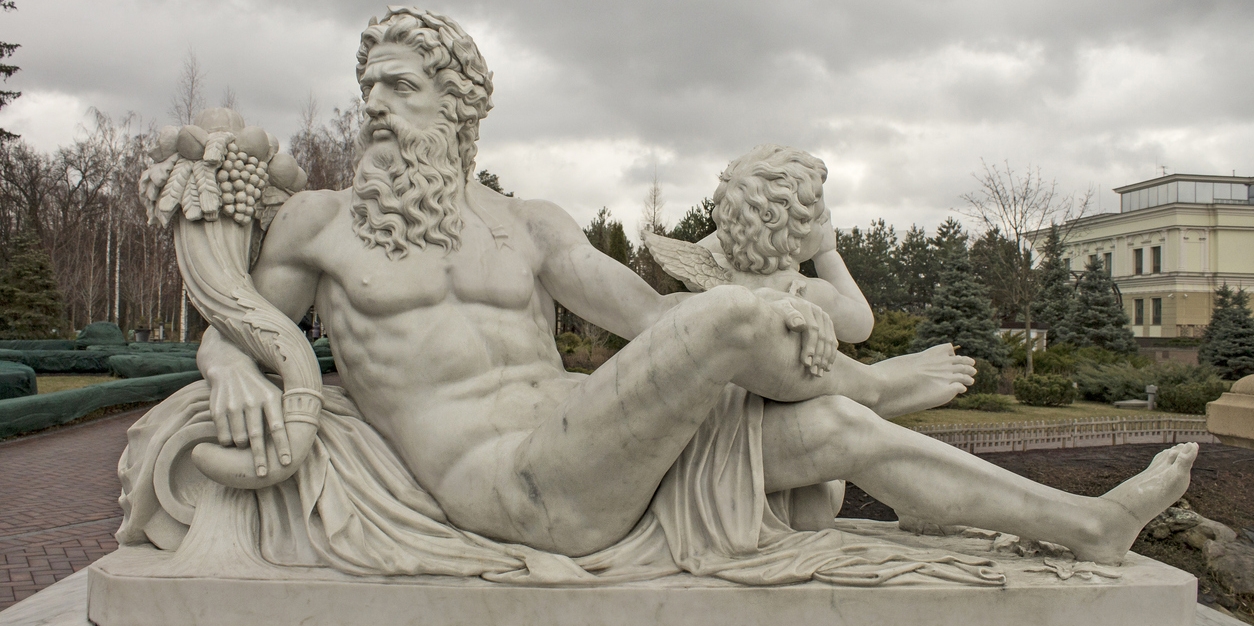
sculpture of Zeus
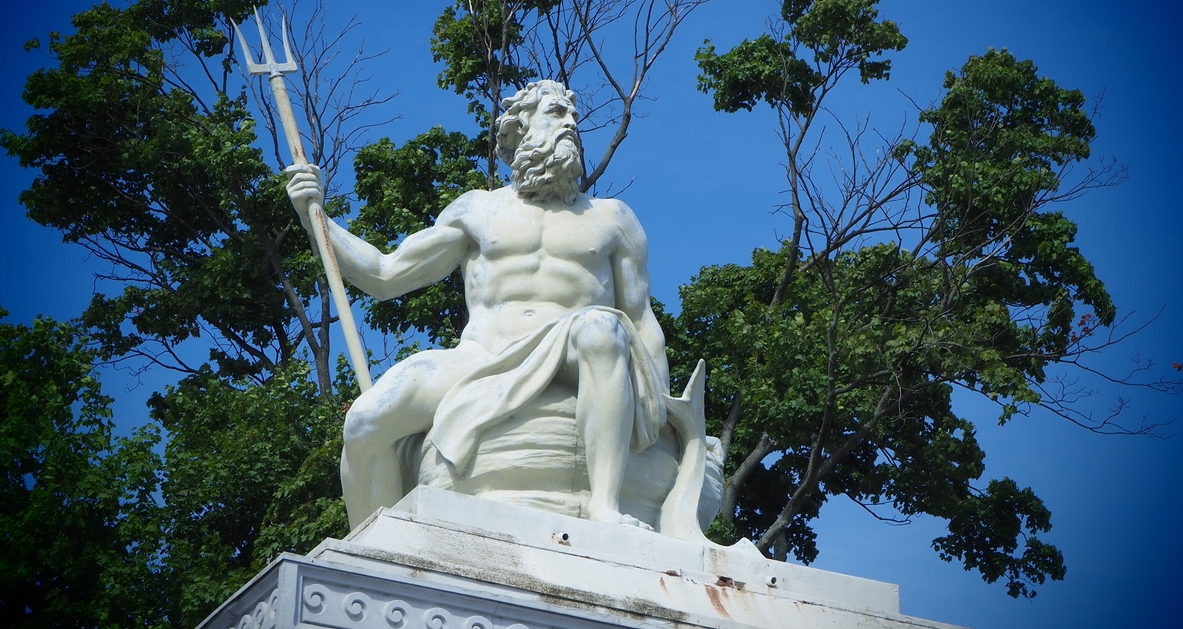
statue of Poseidon
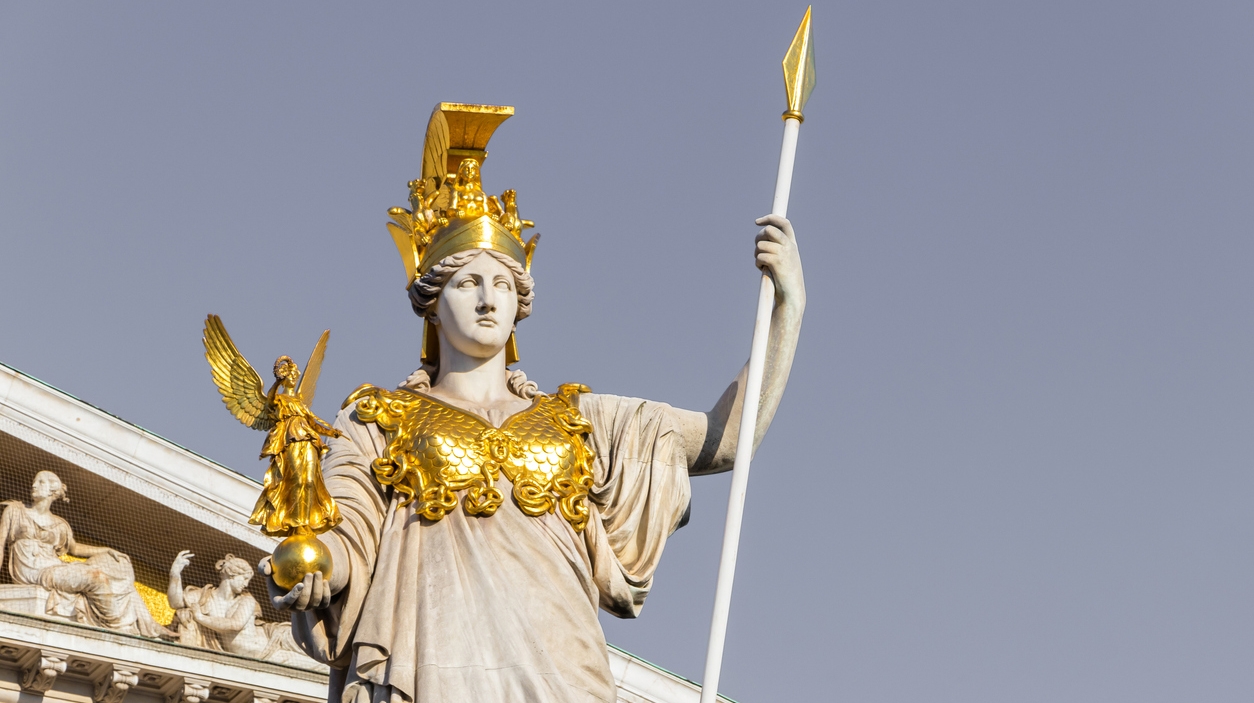
Sculpture of Athena outside the Austrian Parliament Building in Vienna, Austria
Each ancient Greek god and goddess stood for something different. Their number is also huge, as ancient Greeks believed in many deities and spirits. The most famous ones are the twelve gods of Olympus, and they were at the center of the ancient Greek religion. But in addition to them, there were many other ancient Greek gods, and most of them were rulers of the cosmos before the popular Olympians.
If you are curious about who the ancient Greek gods and goddesses are and the beliefs that revolve around them, you’re in the right place. In this post, we are giving you all the essential information about the ancient Greek gods and goddesses, along with interesting facts about them that will blow your mind.
The Olympian Gods and Goddesses
The major Greek gods who resided atop Mount Olympus were known as the Gods of Olympus. They became powerful after defeating the Titans in the War of the Titans or Titanomachy. They were Cronus and Rhea’s children. It is common to refer to them as the 12 Olympian Gods. However, they weren’t the only ones who were worshiped by the ancient Greeks. There were many more, major and lesser, but also important, gods that were worshiped locally.
The Olympian gods had the same inclinations, desires, flaws, and strengths as the mortals. They even sometimes live in similar conditions. They also looked like humans but were almost always prettier and stronger than humans. In addition to that, they can also transform and teleport to any place they want. Based on a lot of myths, the gods of the Greeks were not indifferent to humans. In fact, they often came in contact with them, traveling secretly, transforming themselves into ordinary people, rewarding the good, and punishing the bad. [3]
The immortal Greek gods lived on the peak of Olympus, where they built their divine places. They could see the entire world from where they stood. The gods were admired by the people immensely, and famous temples were built for them. Many famous works of art were also inspired by them. The ancient Greek gods reflected the ideals of the ancient Greek people. [3]
Below are the Olympian gods and goddesses of ancient Greece:
Aphrodite – Goddess of Love and Beauty
Aphrodite was the ancient Greek goddess of love, beauty, desire, and all aspects of sexuality. Both gods and men can be enticed by her into illicit affairs because of her beauty and whispers of sweet nothings. She was born near Cyprus from the severed genitalia of the sky god Uranus. She was worshiped by men, women, and city-state officials. In addition to that, she also played a role in the commerce, warfare, and politics of ancient Greek cities. She was also honored as a protector of those who traveled by sea and by courtesans and prostitutes. [4]
How Aphrodite Came to Being
In mythology, Aphrodite was created when Cronos, the son of Uranus, castrated him with a sickle and threw the genitalia into the sea, where she emerged amid the ensuing foam. But in other versions, she is the daughter of Zeus and Dione, the Titaness. Believed to have been born near Cyprus, Aphrodite was worshiped in Paphos on the island. The geographic location hints at her eastern origins as a fertility goddess and possible evolution from the Phoenician goddess Astarte or the Near Eastern goddess Inanna. [4]
Aphrodite’s Portrayal and Symbolism
As a goddess of love, the symbols of Aphrodite were roses, swans, doves, and sparrows. She was worshiped in all parts of Greece, and a lot of priestesses were serving here. According to Greek mythology, she wed Hephaestus, the god of fire and blacksmiths, but secretly loved Ares, the god of battle, with whom she had a large family that included the winged god of love, Eros. [3] During the Trojan War, she fought on the side of Paris. She and her son Eros teamed up to cause Zeus to fall in love with a human named Europa. [5]
Artemis – Goddess of Hunting
Artemis was the goddess of hunting, wild animals, and the wilderness. She was the twin sister of Apollo. She was a protector of young girls and among the virgin goddesses. She spent her time using her bow and arrows hunting in the woods while being accompanied by the Nymphs. Artemis was also worshiped as one of the main goddesses of childbirth and midwifery, relieving women in labor from diseases. She was also sometimes associated with the goddess of the moon. [3]
How Artemis Came to Being
Leto and Zeus were the parents of Artemis, Apollo’s twin sister. Based on one legend, she was born one day before Apollo on the island of Ortygia. She assisted her mother in crossing the straits to Delos, where she gave birth to Apollo almost immediately after she was born. This started her role as guardian of young children and patron of women in childbirth. [8]
Artemis’ Portrayal and Symbolism
Artemis is depicted as a young, beautiful, and vigorous huntress that carries a quiver with arrows and holds a bow. She typically wears a short knee-high tunic and is often accompanied by some animal. Being a moon goddess, she is occasionally depicted with a long robe and a crescent moon crown. Homer calls her “The Mistress of Animals” or “She of the Wild.” The terms “arrow-pouring” and “deer-shooting” are also frequently used to describe her. Her symbols include the bow and arrows, the stags, the hunting dog, and the moon. [6]
Athena – Goddess of Wisdom and War
Athena is known as the Olympian goddess of wisdom and war, as well as the adored patroness of the city of Athens. Her name is closely linked with the name of the city of Athens, and the ancient Greeks debated whether she got her name after the city or the other way around. But according to modern scholars, the former was the case. [6] Athena is one of the three virgin goddesses, along with Hestia and Artemis. [5]
How Athena Came to Being
Athena was the daughter of Zeus, and she was produced without a mother. She emerged full-grown from the forehead of Zeus. But there was an alternative story that Zeus swallowed Metis, the goddess of counsel, while she was pregnant with Athena, and Athena finally emerged from Zeus. [7]
Athena’s Portrayal and Symbolism
Athena is usually portrayed wearing an aegis, body armor, and a helmet. She also carries a shield and a lance. She is associated with birds, specifically the owl, which became popular as the symbol of the city of Athens. In Homer’s Iliad, she inspires and fights alongside the Greek heroes as a war goddess, and her aid is synonymous with military prowess. She represented the intellectual and civilized side of war, the divine form of the heroic, martial ideal, and personified excellence in close combat, victory, and glory. [7]
Ares – God of War
Ares was known as the god of bloodlust, the god of war, and he represented the unpleasant aspects of battles. His fellow gods were not particularly fond of him, but the Spartans had no problems donating some prisoners of war to his worship. [2] Since he was a cruel god, he was disliked by his parents and was not worshiped to the same extent as other Greek gods. But he was always followed by two of his faithful sons and followers, the gods Deimos and Phobos. On one of Athens’ hills, the Areopagus Hill, which later served as the location of the ancient city’s criminal court, he was tried for a number of war crimes. [3]
How Ares Came to Being
Ares was the son of the Greek gods Zeus and Hera. In some Greek stories, Hera had Ares without the help of Zeus through the use of a magical herb. While Ares was still a baby, he was captured by two giants and put into a bronze jar. He would’ve remained there forever, but the mother of the giants found out and told the god Hermes who rescued Ares. [9]
Ares’ Portrayal and Symbolism
In art, Ares is mostly represented wearing a helmet, a shield, and either a sword or a spear. He rides a four-horse chariot and is accompanied by dogs or vultures. His symbols were the sword, the spear, the shield, the helmet, and the chariot. His sacred animals include the dog, the boar, the vulture, and the serpent. [6]
Apollo – God of the Sun and Light
Apollo was the ancient Greek god of a lot of things, such as the sun, light, music, poetry, dance, art, healing, and archery. He played music for the Greek gods and goddesses on his golden lyre. Humans were taught by Apollo the art of medicine, and he was sometimes referred to as “The Healer.” He had the ability to heal people of disease but also spread the infection to those who angered him using arrows.
He was the twin of Artemis. He was one of the most important and complex Greek gods. He was among those who established the great Oracle of Delphi, which was considered the center of the ancient world. He was also the teacher of the nine Muses, and when they sang, he accompanied them with his famous lyre. [3]
How Apollo Came to Being
Apollo is the son of Zeus and Leto, and the twin brother of Artemis. He was born on the island of Delos. Based on Hesiod’s Theogony, he was clutching a golden sword. His mother chose Delos as the safest retreat she could find as she was fearful of revenge from the wife of Zeus, Hera. At his first taste of ambrosia, he was believed to have immediately transformed from babe to man. He was then given his bow, made by the craftsman of Mount Olympus, Hephaestus. [10]
Apollo’s Portrayal and Symbolism
Apollo evolved to become a multifaceted god adored all over Greece as the perfectly developed classical male nude, the kouros. He was beardless and athletically built. He is frequently shown with either a bow and arrow or a lyre and plectrum in his hands, as well as a laurel crown on his head. He has a sacrificial tripod, which represents his prophetic powers. The animals linked to Apollo are wolf, dolphin, python, mouse, deer, and swan. [6]
Demeter – Goddess of Agriculture and Grain
Demeter was the ancient Greek goddess of agriculture or harvest. She was among the most important gods to ancient Greek people who farmed a lot of their food. She had a kind and beautiful daughter named Persephone, who she loved very much. [11] However, Persephone was abducted by the underworld god Hades to be his bride. While Demeter was searching for her stolen daughter, she accepted the hospitality of the royal family of Eleusis. The Eleusinian Mysteries, famous secret religious rites of ancient Greece, are probably the most important in ancient Greece, and it is attributed to the teachings of Demeter. [2]
How Demeter Came to Being
Demeter was the daughter of two great Titans, Cronus and Rhea. When she was born, she was swallowed by her father Cronus, and was later on rescued by her youngest brother Zeus. [13]
Demeter’s Portrayal and Symbolism
Demeter was often portrayed as a mature woman sitting on a throne. She wore a crown and carried a torch or sheaves of wheat. When traveling, she rode a golden chariot pulled by dragons. In battle, she carried a golden sword, which gave her the nickname “Lady of the Golden Blade.” The animals that were sacred to her were the serpent, pig, and gecko. [13]
Dionysus – God of Wine and Pleasure
For thousands of years, wine has been an important part of Greek society. In addition to drinking wine for enjoyment, ancient Greeks also relied on wine economically. No wonder the god, Dionysus, came about. [14] His cult revolved around intoxication, sex, and savage ritual sacrifice. Since he is the god of wine and revelry, those who worship him often partake in frenzied experiences which can lead to madness.
How Dionysus Came to Being
Dionysus was the son of Zeus, born to a mortal mother. The tale of his birth is one of the most interesting things about him. His mother’s name is Semele, the daughter of the King of Thebes, Cadmus. When Hera, the wife of Zeus, found out about Dionysus, she became jealous. To Semele, she seemed like an elderly crone who later became her friend. Hera, posing as the elderly crone, pretended not to believe Semele when she confided in her about what had transpired. This uncertainty grew into something far more for Semele. [14]
Semele attempted to persuade Zeus to help her in convincing others since she was concerned that no one would believe her regarding the paternity of her unborn child. She asked him to identify himself as Dionysus’ father. He wouldn’t do it, of course. In reality, her appeal enraged him, and he showered her in lightning. In the midst of all the lightning, she died while Dionysus was still unborn.
Zeus, however, saved the unborn child and sewed him to his leg rather than letting his unborn son die along with Semele. A few days later, while still linked to Zeus’ body, Dionysus was born on Mount Pramnos on Ikaria. [14]
Dionysus’ Portrayal and Symbolism
Dionysus was often symbolized by a bull because of his association with the sacrificial animal. He was often depicted as either an older, bearded god or an effeminate long-haired youth. He has a pine-cone-tipped staff, a drinking cup, and a crown of ivy. He was mostly accompanied by a troop of Satyrs and Maenads or wild female devotees.
Hades – God of the Underworld
Hades was the ancient Greek god who ruled the world of the dead, with which he was sometimes synonymous. He was one of the few Greek gods to come across as dispassionate. He did not administer punishments for misdeeds done during their mortal lifetimes, nor was he the final arbiter of the souls who wandered through his dominion. However, he was cunning. He tricked Persephone, Demeter’s daughter, into eating enchanted pomegranate seeds so that she would have to stay with him for a portion of the year. [2]
How Hades Came to Being
Hades was the fourth child of the Titans Cronus and Rhea, next to Hestia, Demeter, and Hera. He was both the oldest and the youngest male sibling. This means that he was the first of the three brothers, Hades, Poseidon, and Zeus, to be born and swallowed by his father. However, he was the last one to be vomited. [6]
Hades’ Portrayal and Symbolism
Hades, as the ruler of the dead, was a grim and ghastly figure. He inspires awe and terror in everybody. He was also rarely depicted in art, and when he was, he was usually portrayed with a beard and a solemn, mournful look. Hades usually wears a helmet, and Cerberus, the three-headed dog that guarded the entrance to the Underworld, is often beside him. He also carries a scepter every so often or holds the key to his kingdom. He also has the bident, which is a two-pronged fork modeled after Poseidon’s trident. [6]
Hephaestus – God of Blacksmiths and Fire
Hephaestus is known as the god of blacksmiths and fire. He was also referred to as the “celestial artificer” and was associated with other craftsmen, such as carpenters, sculptors, and metalworkers. Even though he was an ugly god lamed by his own mother, he became the husband of Aphrodite. [6]
How Hephaestus Came to Being
According to Homer, Hephaestus was the son of Zeus and Hera. However, it was unclear whether he was born lame or whether he was lamed after his father threw him from Olympus for intervening on behalf of his mother during a quarrel. Hephaestus, however, is completely Hera’s child, according to Hesiod, and she gave birth to him by parthenogenesis in revenge for her husband, who had done the same to Athena. In his version of the story, after Hera brought Hephaestus to the world, she was so disgusted with his looks and ashamed of his deformity that she was the one who threw him out. He fell and was severely injured, but Thetis and Eurynome saved him and kept him safe for nine years in a cave beneath the ocean. [6]
Hephaestus’ Portrayal and Symbolism
In the Olympian Pantheon, Hephaestus is arguably the most extraordinary member. He was bearded and ugly, stocky and lame, and he neither possesses the physical flawlessness of the other gods. There are times when Hephaestus is depicted with an oval cap and almost always with a hammer and an anvil. His symbols were hammer, anvil, and tongs, and his sacred animal was the donkey. [6]
Hera – Queen of the Gods and Goddess of Marriage
Hera was the Queen goddess of Olympus and was both sister and wife to Zeus.[2] She was also the goddess of marriage. However, her marriage was an unhappy one as Zeus had numerous affairs. She was jealous and vengeful and made sure to give each of his consorts a hard time. Also, based on the number of cults, she was a very ancient goddess, possibly predating even Zeus. It is assumed that her original name is not known because “Hera” is actually a title, which usually translates to “Lady” or “Mistress.” [6]
How Hera Came to Being
Hera was born after Hestia and Demeter. She is the youngest among the three daughters of Cronus and Rhea and their third child overall. Her youngest brothers were Hades, Poseidon, and Zeus. However, since she was also swallowed by her father at birth and later disgorged to be born again, she was sometimes referred to as the oldest daughter. [6]
Hera’s Portrayal and Symbolism
Hera is mostly portrayed as a fully clothed, mature woman of solemn beauty alongside Zeus. She wears a cylindrical crown called polos or a wreath and a veil. She sometimes carries a scepter capped with a pomegranate and a cuckoo. The pomegranate is a symbol of fertility, while the cuckoo is a token of the way she was wooed by Zeus. Most of the time, she is often accompanied by a peacock, which is one of her sacred animals. [6]
Hermes – Messenger of the Gods / God of Travel
Hermes presided over multiple spheres like many gods in the Greek pantheon. He was a pastoral figure who was responsible for protecting livestock and was also connected with fertility, luck, music, and deception. He was depicted as a messenger god in the Odyssey. [2] In addition, Hermes was also a divine trickster, and the god of roads, commerce, flocks, and thieves. He invented the lyre and stole Apollo’s cattle on the very first day of his life. He was also the only Olympian who could cross the border between the living and the dead. [6]
How Hermes Came to Being
Hermes was the son of Zeus and Maia. He was the oldest of the seven Pleiades and was born in a cave in Mount Cyllene in Arcadia at dawn. By noon after his birth, he was able to invent the lyre and play a hymn celebrating his own birth. In the evening, for unknown reasons, he stole the cattle of Apollo, then came back and innocently tucked himself up in his cradle. [6]
Hermes’ Portrayal and Symbolism
Hermes was portrayed as a mature bearded man by Archaic artists. But later on, he was represented as an athletically built nude youth, which is recognized by four attributes, which are a broad-brimmed hat, winged sandals, a purse, and a herald’s wand. His wand was a short-winged staff that was entangled by two identical serpents. It had the magical powers of bringing sleep upon people or rousing them from it. [6]
Poseidon – God of the Sea
Poseidon is popularly known as the Greek god of the sea. But he was also the god of horses and earthquakes. [2] He was a violent and ill-tempered god and had a lot of disputes with both gods and men, most particularly with Athena and Odysseus. [6]
How Poseidon Came to Being
Poseidon was the second son of Cronus and Rhea, next to Hades. Poseidon was also swallowed by Cronus at birth, and thanks to Zeus, he was disgorged unharmed. But there are also some that say Rhea managed to hide Poseidon from the rage of his father, either in a flock of lambs in Arcadia or in Rhodes, to be raised by Capheira, the daughter of Oceanus. [6]
Poseidon’s Portrayal and Symbolism
At the present time, Poseidon is known exclusively as a sea god. However, in ancient times, he may have been the god of the earth and fertility or even the supreme god of the sky. In portrayals, Poseidon looks very much like Zeus, a distinguished, bearded man with dense, curly hair and piercing eyes. According to Homer, the shriek of Poseidon was as loud as one of ten thousand men combined. His symbols include the trident, fish, dolphin, horse, and bull. [6]
Zeus – God of the Sky and Thunder
Zeus is popularly known as the Olympian god of the sky and thunder. He was the king of all other gods and men. He was also consequently the chief figure in Greek mythology. He is also famous for his infidelity to his sister and wife, Hera. Apollo, Athena, Artemis, Hermes, Dionysus, Heracles, Helen of Troy, and the Muses were all children of his numerous erotic affairs, while his legitimate children were Hephaestus, Hebe, and Ares. [6]
How Zeus Came to Being
In a confusing way, Zeus is both the oldest and the youngest child of Cronus and Rhea. After the universe was created, Cronus, the Gods’ ruler at the time, discovered that one of his offspring would replace him. With this, he swallowed the three sisters of Zeus and his two brothers at birth. If Rhea hadn’t hidden her youngest child in a cave on the Cretan Mount Ida and given Cronus a stone covered in blankets in his place, Zeus would have also been devoured. [6]
Zeus’ Portrayal and Symbolism
Zeus is typically depicted holding a scepter in one hand and a thunderbolt in the other, both of which represent his power. He sometimes wears a crown of oak leaves, which was deemed to be his sacred tree. Zeus is sometimes referred to in Homer as “aegis-bearing,” and the aegis was a huge shield that Zeus frequently wore while also occasionally lending it to his daughter Athena. Zeus also owns a pet, which is a giant golden eagle named Aetos Dios.[6]
The Ancient Greek Olympian Gods | |||
Greek God | Title | Description | Power |
Aphrodite | Goddess of Love and Beauty | Depicted as a beautiful woman often accompanied by the winged godling Eros. | Has the ability to provoke desire. |
Artemis | Goddess of Hunting | Armed with bow and arrows and often accompanied by a stag or hunting dog. | Possesses perfect aim with a bow, has the ability to change herself and others into animals, and can control disease and healing. |
Athena | Goddess of Wisdom and War | A majestic lady with a beautiful, but stern face. Always wearing a chiton or a full armor. | Has the ability to invent useful items and crafts, such as the chariot, ship, plow, and rake. |
Ares | God of War | A mature, bearded warrior armed for battle. | A superior fighter in battle and caused great bloodshed and desctruction wherever he went. |
Apollo | God of the Sun and Light | A handsome, beardless youth with long hair and attributes such as a wreath and branch of laurel, bow and quiver of arrows, raven, and lyre. | Has the ability to see into the future, power over light, heal people, and bring illness and disease. Also deadly with the bow and arrow. |
Demeter | Goddess of Agriculture and Grain | A pleasant-looking mature woman with a veil over her head though her face is visible. | Can cause plants to grow or not grow, and had control over the seasons. |
Dionysus | God of Wine and Pleasure | A bearded man, but later portrayed as youthful and effeminate. | Can cause vines to grow, transform himself into animals like a bull or a lion, and drive mortals insane. |
Hades | God of the Underworld | A bearded man with a solemn and mournful look. | Has a special power of invisibility through his helmet called the Helm of Darkness. |
Hephaestus | God of Blacksmiths and Fire | A middle-aged bearded man, but ocassionaly depicted as a younger, beardless man wearing a short sleeveless tunic and around close-fitting cap on his unkempt hair. | Has the ability to control both fire and metal to do his will, and can make his creations move. |
Hera | Queen of the Gods / Goddess of Marriage | A beautiful woman wearing a crown and holding a royal, lotus-tipped sceptre, often accompanied by a lion, cuckoo, or hawk. | Has super-human strength, eternal youth, and the ability to bless and curse. |
Hermes | Messenger of the Gods / God of Travel | An athletically built nude youth recognizable through a broad brimmed hat, winged sandals, a purse, and a herald's wand. | Has super-human strength and can run and fly at speeds exceeding those of any other Olympian gods or goddess. |
Poseidon | God of the Sea | A bearded, curly-haired figure often pictured with seashells and othe sea life. He often holds a trident | Can manipulate water, storms, and lightning. When angered, can create strong waves and violent storms. He can also manipulate and control ice. |
Zeus | God of the Sky and Thunder | A regal, mature man with a sturdy figure and dark beard. | The most powerful Greek god and has the ability to throw lightning bolts. He can also control the weather, causing rain and huge storms. |
The Primordial Greek Gods
In addition to the popular ancient Greek Olympian gods, there are many other ancient Greek gods to learn about. It’s because Greek mythology starts at the beginning of the world, and the Greek gods that existed then were referred to as the Primordial gods. Based on Hesiod, in the beginning, there was Chaos, and he was the personification of absolute nothingness. [3] Out of him came Eros, the god of love and procreation, followed by Tartarus, Gaia, Erebus, and more. Take a look at the list below to learn who the Primordial Greek gods were:
Achlys – Goddess of the Eternal Light
Achlys is the first creature that some believe existed even before Chaos himself. Hesiod referred to her as the demon of death.
Aether – God of Light
He was the spark of life for every creature. The name Aether refers to the highest and purest layer of air etymologically.
Aion – God of Eternity
Aion was a ghostly primordial god who personified the meaning of time. His name means “century.” He was also depicted as a creature with three heads and a snake body.
Ananke – Goddess of Inevitability, Compulsion, and Necessity
Ananke was an inevitable divine force.
Chaos – God of the Void
Chaos was the beginning of all life. Based on most versions of Greek myths, Chaos preexisted all.
Chronos – God of Time
Chronos is the god of time and should not be confused with Aion, the god of eternity, or Cronus, who was a Titan.
Erebus – God of Darkness and Shadow
Erebus symbolizes the silence and depth of the night along with his sister, the goddess Nyx. He is often portrayed as a winged, dark, and huge being.
Eros – God of Love and Procreation
He was the primordial god of procreation who emerged self-formed at the dawn of creation. He should not be confused with Eros, the winged god of desire. He symbolizes the driving force that unites everything, giving birth to the rest.
Gaia – Goddess of the Earth
Gaia is the mother of all the primeval mothers. She represents the universe’s physical aspect on a cosmogenic level, whereas Chaos represents the universe’s space.
Hemera – Goddess of Day
Based on Hesiod, Hemera was the daughter of Erebus and Nyx and the sister of Aether.
Hypnos – God of Sleep
Hypnos was known as the god of sleep, as well as the father of Morpheus.
Nemesis – Goddess of Retribution
Nemesis doled out rewards for noble acts and punishment for evil ones. Ancient Greeks believed that she did not always punish an offender immediately but might wait for generations to avenge a crime.
The Nesoi – Goddesses of Islands
They were classified as one of the ancient elemental Greek primordial deities. Each island was said to have its own personification.
Nyx – Goddess of Night
Nyx was a sovereign, primordial, and cosmogenic entity. She was respected and feared by most gods. She is also the sister of Erebus, the god of darkness and shadow.
The Ourea – Gods of Mountains
They were the children of Gaia alone and represented the mountain of the world that was known to the Greeks at the time.
Pontus – God of the Sea and Father of the Sea Creatures
He was Gaia’s son but had no father. He was the sea itself and not merely its resident god.
Tartarus – God of the Darkest and Deepest Part of the Underworld
Tartarus was the original god of the Underworld, where the wicked are imprisoned and tortured eternally after their death.
Thalassa – Goddess of the Sea
Thalassa was also the consort of god Pontus.
Thanatos – God of Death
Thanatos was the twin brother of Hypnos, the god of sleep. He lives in the dark Tartarus.
Uranus – God of the Heavens
Uranus soon became the ruler of the world and the father of the Titans.
The Titan Gods
After the Primordial Greek gods, next came the Titan gods. Based on Greek mythology and the ancient Greek religion, the Titans were the pre-Olympian gods. They were the children of Gaia and Uranus. They also had two other species as siblings who were also born from Gaia and Uranus, and they were called the Hecatoncheires (hundred-handed ones) and the Cyclops (circle-eyed). [3]
Cronus was the youngest of the original twelve Titans—six male and six female. However, at some point, Uranus decided that he did not like the Cyclops and the Hecatoncheires at all, as they were too ugly and powerful. Therefore, he imprisoned him in Tartarus, which was the depths of the Underworld.
However, Gaia did not like the treatment that Uranus gave to them. She was enraged and made up her mind to exact vengeance. She commanded the Titans, and her other children, to sever Uranus’ genitalia and dethrone him. They were all afraid to do it, except one, the youngest, Cronus. When Uranus approached Gaia, Cronus surprised him and cut his genitals using a scythe. With this, Uranus (the heavens) and Gaia (the Earth) were separated. [3]
The blood of Uranus that fell on Gaia gave rise to the Erinyes (Furies), Meliai, and Giants. The Erinyes were vengeful gods. They would pursue you for all eternity if you broke an oath or did someone wrong. The Meliai were lovely and kind deities who lived among the trees. The Giants were very powerful and ferocious creatures.
After defeating Uranus, Cronus released his siblings from the dark Tartarus, and the Titans took their place as the new Greek deities. They assisted Cronus in establishing his authority since they quickly acknowledged him as their leader and the cosmos’s supreme force. Like his father before him, Cronus, the unchallenged world monarch, imprisoned the Hecatoncheires and the Cyclops once more in Tartarus out of fear of their influence. [3]
Below is a list of the ancient Greek Titan gods that you should learn about:
Cronus – Titan God of the Harvest
Even though Cronus was the youngest of the first twelve Titans, he became the leader of the world after overthrowing Uranus. He also married his older sister, Rhea.
Rhea – Titan Goddess of Fertility and Generation
Rhea determines the flow of things, and her name means “the one that flows” in Greek.
Oceanus – Titan God of the Oceans
Oceanus was the eldest son of Uranus and Gaia. His territory extended to every corner of the Earth and all parts of the horizon. He was the personification of water. He eventually paired with his sister, the Titaness Tethys.
Tethys – Titan Goddess of the Rivers and Freshwater
As the wife of Oceanus, Tethys gave birth to more than 3000 River Gods (the Ancient Greeks’ representation of rivers), Oceanids (nymphs of springs, streams, and fountains), and Nephelai (nymphs of clouds).
Hyperion – Titan God of Light
Hyperion had a dazzling light that shone in all directions. “The one who goes above the ground” is what his name implies. He also symbolized eternal splendor. He fell in love with his sister Theia, also a Titan goddess.
Theia – Titan Goddess of the Aether
The Titan Hyperion and Theia had three shining children, Helios (the Sun), Eos (the Dawn), and Selene (the Moon).
Lapetus – Titan God of Mortal Life
Lapetus symbolized mortality and the mortal life span. He was the father of the Titans Atlas, Prometheus, and Epimetheus. He was also considered the personification of one of the four pillars that hold the heavens and the earth apart. He was the pillar of the west, and along with his four brothers, held Uranus firmly in place as Cronus castrated him with a scythe.
Crius – Titan God of Constellations
In Greek, Crius means “ram,” and it shows his connection with the constellation Aries.
Coeus – Titan God of Intellect
Coeus was considered the embodiment of the celestial axis around which the heavens revolve. He was married to his sister, Phoebe.
Phoebe – Titan Goddess of Prophecy and Oracular Intellect
Phoebe was the mother of Leto and Asteria. Titaness Leto later on copulated with Zeus and bore the Olympians Artemis and Apollo. Coeus and Phoebe, who stood for rational intelligence and prophetic wisdom, respectively, may have worked together as the original source of all knowledge in the cosmos.
Themis – Titan Goddess of Divine Law and Order
Themis had the ability to predict the future. Later, she became one of the Oracles in Delphi.
Mnemosyne – Titan Goddess of Memory
She was generally regarded as the personification of memory and remembrance. Zeus slept with Mnemosyne for nine days, which eventually led to the birth of the nine Muses. Based on Hesiod’s Theogony, the kings and poets were inspired by Mnemosyne and the Muses, thus getting their extraordinary abilities in speck and using powerful words.
Other Greek Gods
Aside from the ancient Greek gods that we’ve mentioned above, there were other lesser gods that people also honored and respected. Here are some of them:
Hecate: She was the goddess of magic and necromancy. She helped the goddess Demeter in search of her daughter. Dogs were closely related to her, and ancient Greeks believed that when dogs suddenly barked at night, she was passing by.
Aeolus: He was the god of the winds and supervised the eight Wind Gods, as each wind direction was personified by ancient Greeks.
Asclepius: He was the god of medicine. Asclepius was the son of Apollo, who taught him the science of medicine.
Eris: She was the goddess of jealousy and discord. Eris was the one that threw the golden apple at the wedding of Thetis and Peleus as they did not invite her. Her deed served as the catalyst for the epic Trojan War that would follow.
Pan: He was the gold of wild, shepherds, and rustic music. Pan was considered to be among the oldest Greek gods and was especially beloved among people.
Hestia: She was the final sister of Zeus but was often excluded from the official pantheon of twelve Olympians. But based on the myths, she was originally one of the twelve. Hestia was gentle, and she protected the home and the hearth.
More Interesting Facts About the Ancient Greek Gods and Goddesses
The ancient Greek gods and goddesses indeed have fascinating stories and roles in ancient Greek mythology. Their stories also help people learn about how the ancient Greeks lived thousands of years ago. If you are eager to learn more about them, below are more interesting facts about the ancient Greek gods and goddesses that will blow your mind:
- To succeed as King of the Gods, Zeus needed a point of reference. Zeus was only chosen as the Olympians’ king on Gaia’s recommendation.
- Courtesans and prostitutes both worshiped Aphrodite. She is represented as the guardian of this line of work by epithets like Hetaira (‘courtesan’) and Porne (‘prostitute’), whose main instrument of the trade was seduction.
- According to legend, Apollo killed Python, the dragon defending Earth’s center. Apollo’s ultimate wisdom was also supposed to be beyond human comprehension. Amazing God.
- The Hermaea festivities were well-liked celebrations held in Hermes’ honor in Cydonia in Crete. During these festivals, the roles were reversed. For a day, masters served as slaves and vice versa.
- As Apollo did to males, Artemis brought untimely death to women, making her a death-bringing deity. Many ladies discovered the hard way that it was best to avoid getting in her path.
- Hestia has a limited amount of mythology, despite being one of the original twelve Olympians. This might be the case since she was unable to leave Mount Olympus and go to Earth.
- Aphrodite was said to have the power to sway people’s feelings for one another. An aphrodisiac, like the goddess Aphrodite, has the power to arouse sentiments of desire, love, and arousal in people who eat it together.
- When we hear the term Nike today, we immediately think of the swoosh logo and the catchphrase “Just Do It.” The Greek goddess of victory, Nike, is the true source of the name Nike. She was the goddess of victory and possessed incredible speed and flight abilities.
- Zeus, the Gods’ King, had a temper that had an impact on the weather. He threw thunderbolts produced for him by the one-eyed monster Cyclops when he was enraged.
- Hephaestus is an outcast in Homer’s divine society since “he works, even sweats” (Il. 18. 372). It seems there is a drawback to being the God of Fire.
Conclusion
There are indeed a lot of ancient Greek gods and goddesses to learn about. What’s great about knowing their stories or myths is that we are also learning about the life of the ancient Greeks back then. All of the stories of each god or goddess are fascinating, and all of them have lessons, as well, particularly the Greek Olympian gods that ruled the universe from Mount Olympus in Greece. We hope that this post helped you learn more about the ancient Greek gods and goddesses.
References
[1] History.com, E. (2009, December 2). Greek mythology. History.com. Retrieved September 14, 2022, from https://www.history.com/topics/ancient-history/greek-mythology#greek-gods-and-goddesses
[2] Pallardy, R. (2014, October 2). 12 Greek gods and goddesses. Encyclopædia Britannica. Retrieved September 14, 2022, from https://www.britannica.com/list/12-greek-gods-and-goddesses
[3] Greek TravelTellers, E. (2020, October 31). The Greek gods: Full list and background. Athens Tours by Local Experts & Greece Trips. Retrieved September 14, 2022, from https://greektraveltellers.com/blog/the-greek-gods
[4] Cartwright, M. (2022, September 13). Aphrodite. World History Encyclopedia. Retrieved September 14, 2022, from https://www.worldhistory.org/Aphrodite/
[5] Greek Gods and Goddesses, E. (2022, June 29). Greek gods and goddesses • facts and information. Greek Gods & Goddesses. Retrieved September 14, 2022, from https://greekgodsandgoddesses.net/
[6] GreekMythology.com, E. (n.d.). Olympians. Greek Mythology. Retrieved September 14, 2022, from https://www.greekmythology.com/Olympians/olympians.html
[7] Britannica Encyclopedia, E. (2022, August 16). Athena. Encyclopædia Britannica. Retrieved September 14, 2022, from https://www.britannica.com/topic/Athena-Greek-mythology
[8] Ephesus, E. (n.d.). Artemis. Ephesus. Retrieved September 14, 2022, from https://ephesus.us/mythology/mythology-of-artemis/
[9] Ducksters, E. (2022). Greek mythology. Ducksters. Retrieved September 14, 2022, from https://www.ducksters.com/history/ancient_greece/ares.php
[10] Cartwright, M. (2022, September 13). Apollo. World History Encyclopedia. Retrieved September 14, 2022, from https://www.worldhistory.org/Apollo/
[11] The Fitzwilliam Museum, E. (n.d.). The story of Demeter and Persephone. The Fitzwilliam Museum. Retrieved September 15, 2022, from https://fitzmuseum.cam.ac.uk/learning/the-story-of-demeter-and-persephone
[13] Ducksters, E. (2022). Greek Mythology. Ducksters. Retrieved September 15, 2022, from https://www.ducksters.com/history/ancient_greece/demeter.php
[14] GreekBoston.com, E. (2017, April 4). Birth of Dionysus – Greek mythological god of wine. iCal. Retrieved September 15, 2022, from https://www.greekboston.com/culture/mythology/dionysus/
[15] Zimbler, S. (2016, February 21). Ten things you may not have known about Greek gods and goddesses. OUPblog. Retrieved September 15, 2022, from https://blog.oup.com/2016/01/facts-about-greek-gods-goddesses/
[16] Madeleine. (2019, December 1). 6 amazing Greek mythology facts you’ll love reading! THEOI GREEK MYTHOLOGY – Exploring Mythology in Classical Literature & Art. Retrieved September 15, 2022, from https://www.theoi.com/articles/6-amazing-greek-mythology-facts-youll-love-reading/

